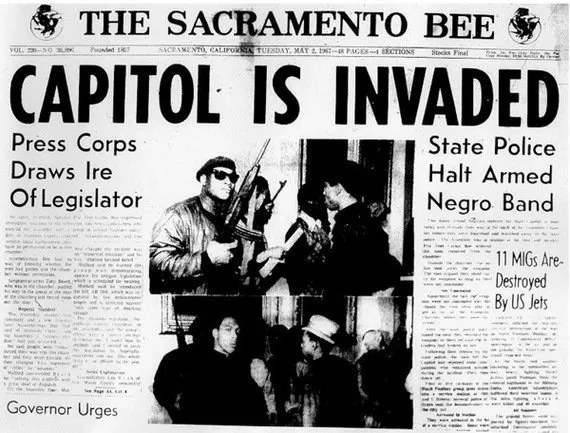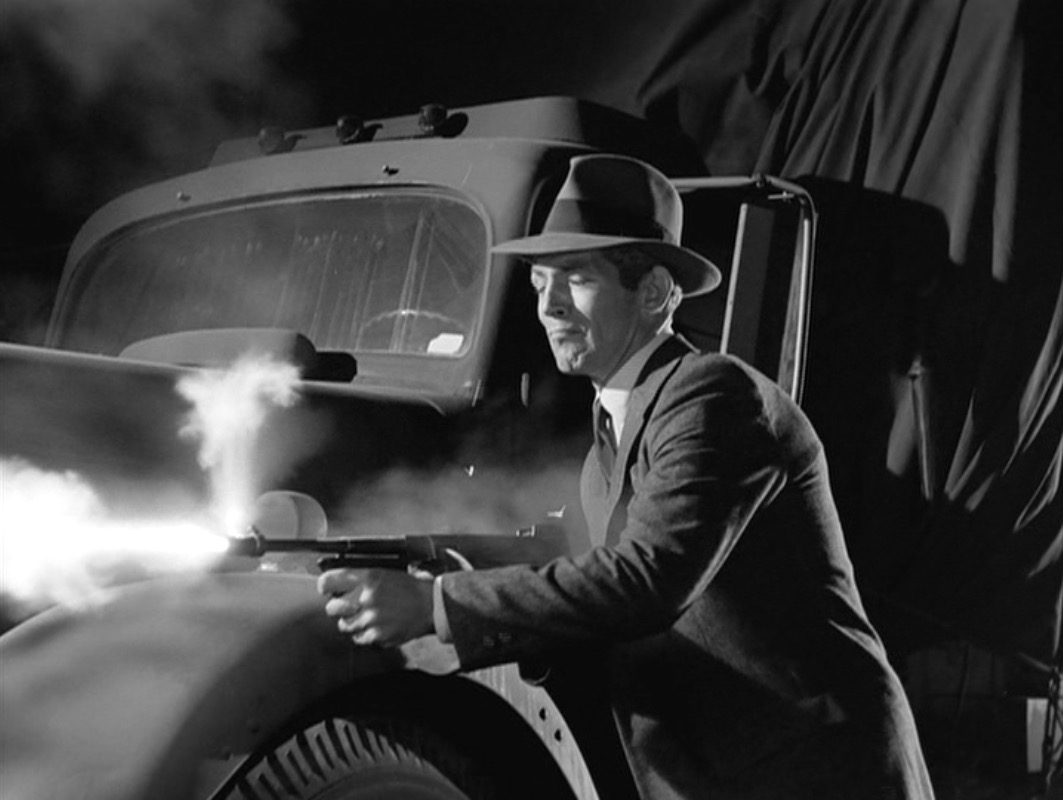
Machine guns are illegal in the United States with two notable exceptions.
The United States had a significant gun violence problem in the 1930s manifested by Prohibition era street violence. Cops and robbers waging tommy gun war remains a common image in the minds of many Americans.
The gun violence problem remains today… and it doesn’t look much different. Every attempt to reduce efficiency and number of weapons designed for the purpose of killing humans has been thwarted.
Roosevelt, the NRA, and Gun Control
President Franklin Roosevelt responded by making gun control a priority of the New Deal. The 1934 National Firearms Act (NFA) was the first piece of legislation intended to restrict access to human killing weaponry. The National Rifle Association (NRA) supported the legislation and two of its leaders testified before Congress at length.
The NFA didn’t ban anything, and the NRA managed to finagle handgun registration out of the law. A significant (at the time, $200) tax was to be paid for any ownership transfer of fully automatic “machine” guns, short-barreled shotguns, short-barreled rifles, sound suppressors (silencers), and other weapons (like a “pen gun”) commonly used by gangsters. Other taxes were imposed on dealers and manufacturers.
None of that impacted the number of weapons in private hands, it only provided record keeping and tracking of weapons registered. The weapons, including silencers, are referred to as “NFA Weapons” by regulatory agencies and others. The central repository for registered weapons is the National Firearms Registration and Transfer Record (NFRTR).

The number of NFA weapon transactions being processed is high and growing rapidly to 3.6 million in 2023.

California’s Mulford Act
Gun control didn’t change remarkably in 34 years with one exception in 1967.
The Black Panthers had been mounting armed patrols of predominately black neighborhoods in Oakland. Conservative assemblyman Don Mulford objected strenuously and moved to disarm the patrols by penning legislation to do so.
The Mulford Act would ban carrying loaded weapons in public without a permit. The Panthers, armed with shotguns, marched into the State Capitol to protest passage of the act. The bill passed and was signed into law by Governor Ronald Reagan.
Reagan said he saw “no reason why on the street today a citizen should be carrying loaded weapons.” Reagan would later be shot on the street.
Was the black men patrolling their neighborhood and in the Capitol with shotguns more alarming than it would be otherwise? A similar event in Michigan where body armored protesters objecting to COVID restrictions invaded their Capitol. They were armed with weapons designed to efficiently kill humans versus game. Yet, it elicited no legislative response for what seems an obvious reason.
The Gun Control Act of 1968

The assassinations of John Kennedy, Martin Luther King, and Robert Kennedy spurred some American distaste with the availability of weapons.
Easy access to weapons made an impression with the JFK killing. Lee Harvey Oswald killed JFK using a rifle he mail ordered from the pages of the NRA “American Rifleman” magazine. While attempting escape, Oswald killed a cop using a revolver he mail ordered from a company in Los Angeles.
The Gun Control Act (GCA) of 1968 tightened up the gun regulations a little.
Congress added several new NFA inclusions: destructive devices, machine gun frames or receivers, and conversion kits for machine guns. Destructive devices are basically anything that explodes or fires an explosive, gas weapons, and guns (except sporting shotguns) with a bore larger than a half-inch.
A more important change was to restrict the registration of NFA weapons to manufacturers, makers, and importers. Private individuals remain allowed to possess, sell, purchase, and transfer only previously registered NFA weapons.
Firearms Owners’ Protection Act of 1986
A final action to restrict possession of machine guns by the general public was the Firearms Owners’ Protection Act.
The act prohibited possession of machine guns not legally possessed prior to the May 19, 1986 passage of the law. The net effect was to keep new machine guns from legally making it into the hands of the general public.
That had been the spirit of gun control laws going back to 1938, yet there STILL remain easily exploited loopholes. The illegal loopholes are even easier to exploit.
Other useful provisions in the law included minimum age requirements, a gun ban for mentally ill and drug addicted people (Hunter Biden for example), restrictions to purchase handgun-caliber ammunition or and rifle-caliber ammunition that could also be used as pistol-caliber.
The weight of the NRA was brought to bear against a national firearms registry and a license for gun carriers. Those provisions were killed and neither have been able to make it through Congress since.
Legal Machine Gun Exception One
The first exception to legal ownership of machine guns is the state of existing United States law. The fact is, this exception actually consists of multiple routes to legal machine gun ownership.
Any private individual of age and without mental or felony problems is allowed to own a machine gun legally owned prior to May 19, 1986 regardless of how many legal changes of possession of that weapon exist.

Other routes to legal machine gun ownership lie within the ATF licensing system for dealers and manufacturers.
Should one choose to pursue a path to a legal machine gun, the easiest route is via a Federal Firearm License (FFL).
There are multiple types of FFLs. The most likely path for an individual wanting to legally buy and sell machine guns is a Type 01 license. The Type 01 is for a “Dealer in Firearms Other Than Destructive Devices.” It will run you $200 for the first three years and then $90 for each following three year period. That license also allows working as a gunsmith.
To actually sell weapons, a Special Occupational Taxpayer (SOT) status is required. Completing a form from the ATF web site and paying some money does the trick for that.

Want to run your machine gun business from home? No problem! The only restrictions to running your FFL business from home are local ordinances related to running a home based business. The Feds will check to ensure you’re legal, so no trying to pull a fast one!
The ramp to legally owning a new or old machine gun isn’t steep. Plenty of people are taking advantage of the simple and inexpensive process.
That’s a pretty easy route to a new machine gun and it’s completely legal.
In Part Two…
The second notable exception to legally owning a machine gun is even less expensive and easier.
In Part Two, a machine gun isn’t necessary when firing over 1,000 rounds into a crowd in under 10 minutes.
Research and Supporting Information
- With ‘conversion switch’ devices, machine guns return to U.S. streets – Washington Post
- Evaluation and Inspections Report I-2007-006 – Office of the Inspector General
- Data & Statistics – Bureau of Alcohol, Tobacco, and Firearms
